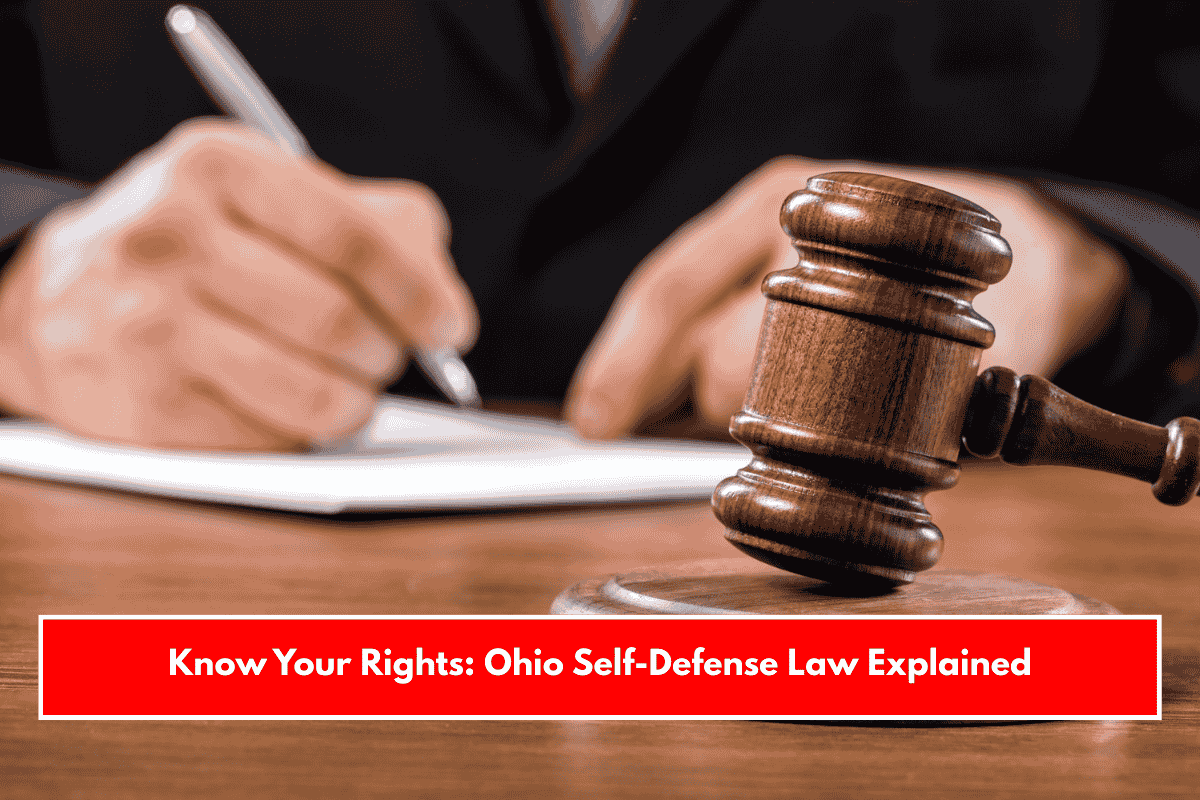Ohio’s self-defense laws have evolved significantly in recent years, expanding protections for individuals who act to protect themselves or others from harm. Understanding these laws is crucial for every Ohioan, especially as changes such as the “Stand Your Ground” law and updates to the burden of proof have reshaped how self-defense is treated in both criminal and civil courts.
Definition of Self-Defense in Ohio
Self-defense is a legal doctrine allowing individuals to use reasonable force to protect themselves, others, or, in limited cases, their property from imminent harm. In Ohio, you can claim self-defense if you reasonably believe that you or someone else is at immediate risk of death or severe injury. The law requires that the threat be imminent and that the force used is proportional to the threat faced.
Key Principles of Ohio Self-Defense Law
- Imminent Threat: You must reasonably believe that you or someone else is facing an immediate threat of death or serious bodily harm. The threat cannot be speculative or based on future possibilities—it must be happening or about to happen.
- Proportionality: The force used in self-defense must be reasonable and proportional to the threat. Deadly force is only justified if you face a credible threat of death or serious injury. Using deadly force in response to a minor threat, such as a fistfight, is not permitted.
- Necessity: Force must be necessary to prevent harm. If there is a safe and reasonable alternative to using force—such as leaving the scene—using force may not be justified. However, recent changes have affected this requirement (see below).
- Initial Aggressor Rule: If you initiated the confrontation or were the aggressor, you generally cannot claim self-defense unless you clearly withdraw from the conflict and communicate your intent to stop, but the other party continues to attack.
The “Stand Your Ground” Law
In 2021, Ohio enacted a “Stand Your Ground” law, fundamentally changing the landscape of self-defense:
- No Duty to Retreat: Previously, Ohioans had a duty to retreat before using deadly force, except in their home or vehicle (the “Castle Doctrine”). Now, if you are in a place where you are legally allowed to be, you have no obligation to retreat before using force—even deadly force—if you reasonably believe it is necessary to prevent imminent death or great bodily harm.
- Legal Right to Be There: The law applies only if you are not trespassing or engaged in illegal activity. If you are somewhere unlawfully, you cannot claim the protections of the “Stand Your Ground” law.
- Presumption of Innocence in Home or Vehicle: Ohio’s Castle Doctrine presumes you acted in self-defense if you use force against someone unlawfully entering your home or vehicle.
Burden of Proof
A significant shift occurred in 2019 regarding the burden of proof in self-defense cases. Now, once a defendant raises a self-defense claim, the prosecution must prove beyond a reasonable doubt that the defendant did not act in self-defense. This change makes it more challenging for prosecutors and enhances the fairness of trials for those claiming self-defense.
Recent Expansions and Immunity
In 2025, Ohio further expanded self-defense protections through new legislation. Under House Bill 452, individuals who act in self-defense—including to protect members or guests of a nonprofit, such as a church—are now immune from both criminal prosecution and civil lawsuits, provided their actions meet the legal criteria for self-defense5.
Limitations and When Self-Defense Does Not Apply
- Excessive Force: Using more force than necessary, especially deadly force in non-lethal situations, invalidates a self-defense claim.
- Illegal Activity: If you are committing a crime at the time, you lose the right to claim self-defense.
- Against Law Enforcement: You cannot claim self-defense against peace officers acting lawfully.
- Mutual Combat: Self-defense is generally not available if you willingly engage in a fight, unless you clearly attempt to withdraw and the other party continues to attack.
Ohio’s self-defense laws provide robust protections for individuals facing imminent threats, especially with the elimination of the duty to retreat and the shifting of the burden of proof to the prosecution. However, these rights come with responsibilities: the threat must be immediate, the force used must be proportional, and you must not be the aggressor or engaged in illegal activity. Understanding these laws is essential for all Ohioans to ensure they can protect themselves legally and responsibly.
Sources:
- https://www.splaws.com/blog/2025/01/how-does-ohio-define-self-defense-in-violent-crime-cases/
- https://grahamlpa.com/blog/ohio-stand-your-ground-law/
- https://www.rittgers.com/blog/2024/02/ohio-supreme-court-clarifies-self-defense-law-in-ohio/
- https://www.legislature.ohio.gov/legislation/135/hb233
- https://www.youtube.com/watch?v=7982eNhKIZ8














